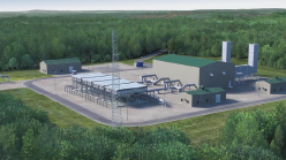Recent right-of-way rental fee proposals by the U.S. Bureau of Land Management (BLM) could increase fees for natural gas pipelines by more than 100 times, which could negatively impact national security, the successful implementation of the U.S. National Energy Policy and U.S. living standards.
In 1999 the BLM issued a proposed rule abandoning the traditional linear fee rent method, where rent is calculated based on the area of right-of-way times the market value of the land, in favor of a value of throughput rent method (called fiber rent method after its applicability to the cable industry). Under the fiber rent method right-of-way rent would be based on the value of the throughput.
Because of strong opposition the BLM issued an Information Memorandum (IM) in 2001 establishing interim policies and procedures. The final right-of-way rent method is now subject to a rulemaking. However, the IM allows an appraisal method to be employed prior to the final rulemaking. The U.S. National Forest Service (NFS) has collected and published appraisal information suggesting that the market value for fiber optic cable is between $0.58 and $2.72 per linear foot, up from less than $0.01 under the current, linear fee method for gas pipelines.
Recently there have been several out-of-court settlements between private landowners and fiber optic companies at rental rate multiples of up to 300 times the historic rate under the linear fee method. Also, on November 8, 2001 H.R. 3258 was introduced in the House of Representatives to address the potential for “unreasonable increases” in right-of-way costs associated with critical infrastructure such as gas pipelines.
Currently, in addition to processing fees, the gas pipeline industry pays $1.6 million per year for approximately 15,600 miles of rights-of-way on Government lands. This represents about 7% of the more than 200,000 miles of gas transmission pipelines in the U.S. This $1.6 million could become between $40 million and $150 million if the BLM’s value of throughput is applied to natural gas. Based on the documented need for 38,000 miles or additional transmission pipelines in the National Energy Policy, which we estimate could include approximately 3,800 miles on Government lands, the range increases to $50 million to $190 million annually, compared to $2 million per year under the linear fee method.
BLM’s proposed cost increase, which the pipeline companies would have to file costly rate cases to have the opportunity to recover from their customers, comes at a time when the National Energy Policy requires the upgrading and expansion of the gas pipeline infrastructure for economic, energy and national security purposes. For most Americans natural gas is a basic service, and such increases would lower their standard of living.
Employing this fiber rent valuation method has no basis in the natural gas industry where pipelines act as common carriers and receive no benefit from the value of the gas being transported. Further, such a throughput tax is not representative of market value, as it must under current legislation, because it does not represent the change in value that occurred across the pipeline right-of-way.





